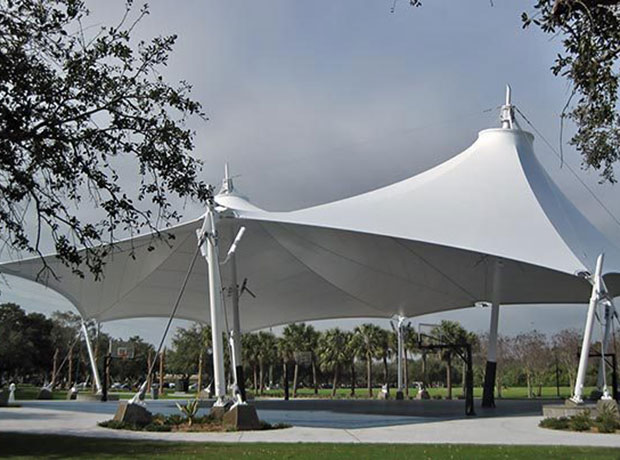Understanding PVC Tarpaulin Fabric
PVC tarpaulin fabric, often referred to as "canvas" in daily life, is a versatile material widely used across industries. Unlike traditional canvas made from cotton or linen, modern PVC tarpaulin combines a polyester fiber base with a polyvinyl chloride (PVC) coating. This dual-layer structure provides exceptional durability and weather resistance. The polyester base offers tensile strength, while the PVC coating adds waterproofing and UV protection.
At Zhejiang Gaia Textile Co., Ltd., advanced calendering techniques ensure uniform PVC coating thickness, a key factor in delivering reliable performance for diverse applications.
How PVC Coating Blocks Water?
The waterproof magic lies in the PVC coating’s chemical composition. PVC is inherently hydrophobic, meaning it repels water molecules. When applied as a laminated layer over polyester fabric, it creates a seamless barrier. Water droplets bead up and roll off the surface—a phenomenon known as the “lotus leaf effect”—due to the coating’s low surface energy. This prevents moisture penetration even under heavy rain. High-quality PVC tarpaulins, like those produced by Gaia Textile, use 1,500D high-density polyester and 610–814 g/m² (18-24 oz/yd²) PVC coatings to achieve a waterproof rating exceeding 5,000 mm (measured via hydrostatic pressure tests).
Factors for Water Resistance
Not all PVC tarps are equally waterproof. Critical factors include:
Coating Thickness: Thicker PVC layers (e.g., 0.45–0.70 mm) resist prolonged exposure.
Fabric Density: Tighter weaves in the polyester base reduce needle holes, minimizing leakage risks.
Seam Sealing: Heat-welded seams prevent water ingress at stitching points.
UV Stabilizers: Added to prevent coating degradation from sunlight, which could compromise waterproofness over time.
Gaia Textile’s tarps undergo ISO waterproofness testing, ensuring compliance with industrial standards.
PVC vs. Other Waterproof Materials
| Material | Waterproofness | Durability | Cost |
| PVC Tarpaulin | Excellent | 5–10 years | $$ |
| Polyester Canvas | Moderate | 2–4 years | $ |
| Polyethylene | Good | 1–3 years | $ |
PVC outperforms alternatives due to its tear resistance and customizable coatings (e.g., fire-retardant, anti-mildew). Polyethylene films, while cheaper, lack UV stability and puncture resistance.
Real Applications of Waterproof PVC Tarpaulin
Outdoor Covers: Truck tarps, boat covers, and garden furniture protection.
Construction: Temporary roofing, scaffolding wraps, and concrete curing blankets.
Emergency Use: Disaster relief tents and flood barriers.
Gaia Textile’s clients in logistics and agriculture report zero leakage incidents after switching to their PVC tarps, even in monsoon climates.
FAQ
Q: Is “waterproof” the same as “breathable”?
A: No. PVC tarps are fully waterproof but not breathable. For moisture-prone uses (e.g., greenhouse covers), opt for micro-perforated variants.
Q: How to fix leaking seams?
A: Use PVC repair tape or liquid sealants. Gaia Textile recommends pre-treated heat-sealed seams for heavy-duty applications.
Q: Does waterproofness fade over time?
A: Yes. UV exposure and abrasion can degrade coatings. Clean tarps with mild soap and store them dry to extend lifespan.































